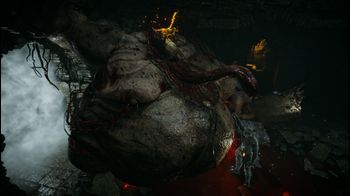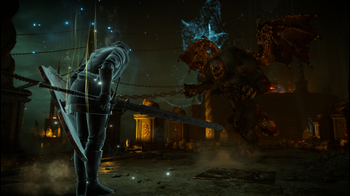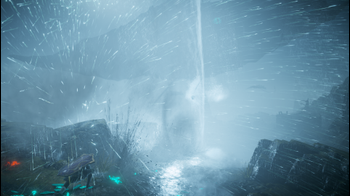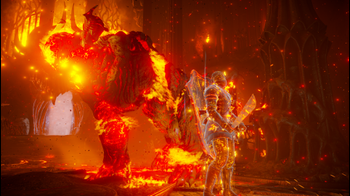
Demon's Souls (2020) Review
Leading the charge as one of the very few launch titles available exclusively on a next generation console, Bluepoint ushers in the launch of the PlayStation 5 with their own vision of FromSoftware’s 11-year-old diamond in the rough. Completely rebuilt from the ground up, this remake of Demon’s Souls is astounding. It is astonishing to think how this title served as the progenitor of the now-abundant “Soulslike” subgenre as we know it today. Although the original game is rudimentary in spots, it experimented with so many intriguing ideas under its hood. Seeing one of my most beloved PS3 games rejuvenated in a modern fashion is, admittedly, scary - yet equally breathtaking.
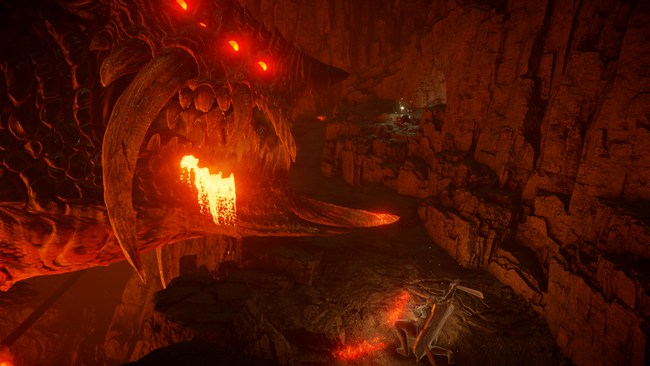
Absolutely nothing about the original game’s structure or progression has been altered; if you’ve played it before, all your knowledge about enemy placements, character builds, and tactics against each boss are still applicable. If this is your first time jumping into Demon’s Souls, you’re in for a treat. Its framework stands the test of time.
After completing a brief tutorial area and finishing off the first “real” boss, four additional worlds open up for you to explore from the central hub area, known as the Nexus. It’s completely up for players to decide how they want to proceed from there on. No matter which order they decide to tackle the game, everyone’s goal remains the same. Reach the end of each world.
Every bit of the original game’s difficulty curve has been preserved in the remake. It is still a fairly difficult experience, especially early on without character levels or weapon upgrades. Much of the game is about learning the stages and responding appropriately to the horde of enemies that stand between you and the next boss. New world checkpoints only unlock after a boss is slain, but the path to each boss can be truncated through unlocking shortcuts along the way.
All of Demon’s Souls’s mechanics have been preserved wonderfully. Even the obtuse world and character tendency systems are all intact and function the same way. Long story short, there’s a distinction between human form and soul form in this game; whenever you die as a human, you revive in soul form. This mechanic opens up new paths in each world depending on actions you partake in that lean towards white or black tendencies. Dying in a world as a human shifts that world’s tendency towards black, while defeating a boss or invading black phantoms shifts it towards white. There’s a bit more to it, but seeing that strange system back untouched is great. Once again, if you’ve played the original Demon’s Souls, you know exactly what you’re in for.
Demon’s Souls was, frankly, a technical mess on the PS3. The average loading times were quite lengthy and I wouldn’t call it a graphical powerhouse, though the gorgeous art direction did a lot of heavy lifting visually. The framerate tanked often when things got too busy on-screen; it especially loved to dip drastically in certain areas with the help of a certain dragon.
Bluepoint’s remake, on the other hand, is a fantastic showcase of what this new generation of games are capable of, not only graphically, but performance-wise as well. As mundane as it might sound, I’m still blown away at how fast the load times are; most orbit around three to five seconds with a rare one that reaches roughly ten seconds here and there. Teleporting between checkpoints and back to the Nexus is quick and snappy. One of the remake’s new quality-of-life features is the ability to directly fast travel to other worlds from another world’s checkpoint, instead of having to always utilize the Nexus as an in-between proxy.
Thanks to its performance mode, Demon’s Souls runs at consistent 60fps. The remake also offers a cinematic mode which caps the framerate in half for a slightly sharper image at a native 4K resolution. Performance does run at 4K too, though it utilizes an upscaling solution to reach it. Unless you’re really zooming in closely on a large 4K display, the differences in the image quality is difficult to spot. I much prefer a smoother, higher framerate, especially for a game like Demon’s Souls. The best part is that it holds that 60fps admirably, no matter how frantic the action may get. Casting a firestorm spell no longer brings the game on its knees begging for you to stop. Simply just having the game run at 60fps makes maneuvering around satisfyingly responsive, especially when the going gets tough in combat.
I’ve been continually taken aback at how beautiful this remake is; it oozes polish. The original game’s iconic locations have all received massive facelifts. The Tower of Latria and Shrine of Storms are probably my favorite redesigns in this remake. Both feel a tad more eerie than what I remembered from the original, though they retain what originally made them distinct. They both benefit massively from all the enhancements brought forth by the remake’s gorgeous lighting system.
What also stands out are the model textures for larger enemies. When you strike the Vanguard Demon’s rear, you can see that its skin is reactive to your weapon’s impact as it jiggles around. The Adjudicator’s thickness is nauseating as it pushes up against your character. When the Leechmonger covers you in leeches, it just looks more disgusting due to the massive leap in graphical fidelity.
Not all of the remake’s advancements have been a home run for me, though. On some level, the Demon’s Souls remake is a Hollywood-esque reinterpretation of the original work. Everything is lavishly decorated, sometimes diverging too much from the source. Instead of a barren fallen kingdom in ruins, Boletaria Palace has been dressed up to look like something out of Middle Earth. A handful of the enemy redesigns are jarring to me, such as the Fat Official enemy types and the Maneater bosses. The Fat Officials had a memorable design with their static, dark, smug expression rocking their noble attire, but a lot of that has been discarded in favor of… well, something resembling the Boomer from Left 4 Dead honestly. Meanwhile, the Maneaters received a similar treatment and now they have an oddly gaunt face that isn’t as menacing as the original.
Weirdly enough, my biggest issue with this fancy remake of Demon’s Souls is the new renditions of the boss themes. The music of the original game was a large part of why I loved it; none of the tracks were ever too overwhelming and reinforced the atmospheric, lonely solitude that the game achieved. There was a certain restraint to them that fit the mood very well. Much of that is unfortunately lost in the remake.
Every boss battle now has a powerful orchestra blaring throughout as they fire on all cylinders. They all try to make these significant encounters larger-than-life and in the process, creates a homogenized feeling that contradicts what I felt in the original release. Some of the remake’s renditions aren’t all that bad; you can definitely hear some of the original melodies within the orchestral symphonies, but there are a key few that seriously soured how I felt in an otherwise excellent remake.
Perhaps the new theme renditions that truly bugged me the most in this revival are the ones for Maiden Astrea, the Tower Knight, the Maiden in Black (which is the Nexus’s theme), and Old King Allant. The thing about Demon’s Souls music is that it is purposefully crafted to be a brooding tune. A lot of the unique desolate ambience that I associate with Demon’s Souls is attributed to its music. For as many options that this game offers, I really wished they offered the option to switch back to the original soundtrack. I’m not a fan of how Bluepoint handled this aspect and it bums me out because the rest of the game’s audio design is on point.
There are other neat additions that Bluepoint has added to Demon’s Souls. The character creator has been completely revamped and now offers a lot of options to tweak your appearance; it helps that they no longer look like cave people, too. You also don’t have to create another new character anymore if you want to rock a new look or switch to the other sex. A statue at the Nexus unlocks several new quality-of-life features like the ability to alter your character without losing any progression. It also adds the absolution feature that was first introduced later in Dark Souls which forgives players of their sins if they accidentally hit a NPC and makes them hostile.
Additionally, the quality-of-life Nexus statue offers a new way to play the entire game with Fractured Mode. Switching this on mirrors the entire game horizontally. As you flip it on, you’ll notice that all the NPCs at the Nexus that used to be on the left are now on the right and vice versa. Even your own character is flipped, though your controls remain the same. Pressing R1 in Fractured Mode to attack will have your primary weapon - that’s now at your left hand - strike instead. It still trips me up and naturally, all the level layouts feel bizarre with Fractured Mode on. This mode does serve an overall purpose though and Bluepoint included a tiny secret in their remake of Demon’s Souls served in a similar vein to how they handled Shadow of the Colossus several years ago. This doesn’t interfere with the game at all and is a little something extra for the fans.
Personally, I usually don’t mess around much with photo modes in games, but there’s something captivating about it here. Now you can pause at any time during gameplay once you pop it on. It’ll capture a freeze frame of the exact instance it’s switched on, no matter how perilous the situation might be; photo mode won't pause the game if someone else online is in your game instance though. You can freely move around the scene tweaking the image as you see fit with a large variety of options at your disposal. It’s quite awesome to safely zoom in on a particular boss or enemy and appreciate the sheer amount of detail on them. There are a handful of filters available not only just for photo mode, but also for the game itself. Some adjust the color temperature, while another turns Demon’s Souls into a monochromatic experience; there’s even a “classic” filter that attempts to capture the color level of the original release. Nothing groundbreaking, though I certainly appreciated them should I choose to come back for more future playthroughs.
Some other miscellaneous changes in the Demon’s Souls remake worth mentioning are all the helpful video clips both in the new Help section and when choosing spells or miracles to buy. The Help section under settings all give visual aids and brief descriptions to shed light on some of the more opaque systems that the game originally doesn’t outright tell you. There are also clips that preview what a spell or miracle looks like in action before you commit to purchasing them now. There’s a small red bar underneath your equipped weapons now to keep track of their durability. A lot of weapons also have new riposte animations after a successful parry that are quite viscerally satisfying. Several items have been renamed, such as Sticky White Stuff is now Sticky White Slime, and some of the cute touches, like the Cat’s Ring status icon, has been (boringly) changed to match in-line with other UI elements. Luckily in that specific case, that cute cat head from the original Demon’s Souls is still in the game elsewhere.
Demon’s Souls utilizes the PS5’s DualSense controller well through its adaptive triggers. The triggers tense up when your character is aiming carefully with a bow. Firing spells, like a Soul Arrow, makes use of the controller's haptic feedback as it rumbles the controller at different regions emulating the sensation of conjuring a spell before firing it off. Bluepoint has also showcased the potential of PS5’s game activity card features allowing players to boot into a specific world right away straight from the PS5 main menu, instead of booting up the game application first and loading into the game’s main menu. I found its implementation a bit buggy though, causing my game to frequently hitch as the console is probably frantically trying to load in assets as quickly as it can.
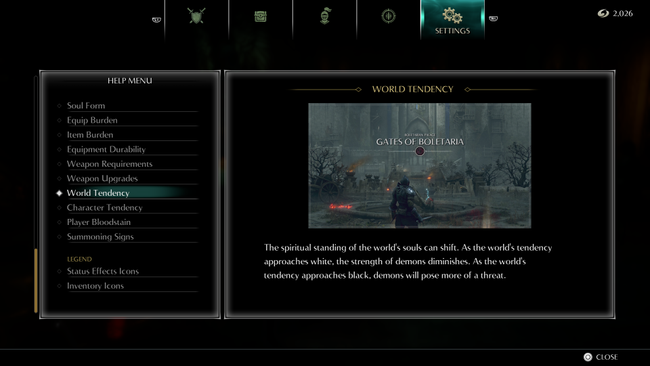
Regardless of my qualms with how Bluepoint handled the boss themes, I believe this is a tremendous remake of Demon’s Souls. It plays exceptionally now that its framerake is silky smooth and is one of the most visually sublime games today. This is one of the best launch titles I’ve seen, and I’ll certainly be coming back to it again and again. If this is a small glimpse of what I can expect to see in the future of this generation of games, I’m ecstatic.
